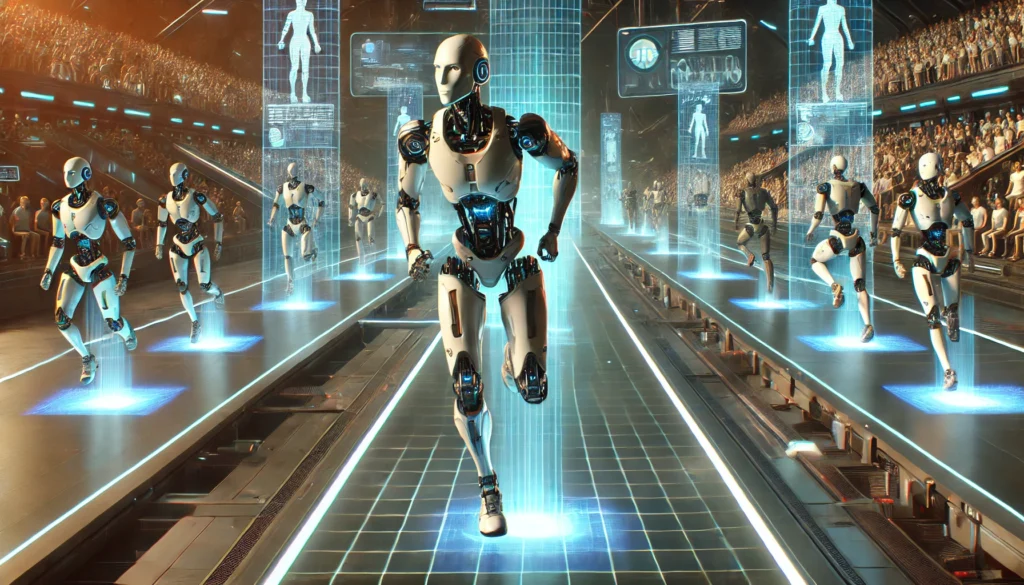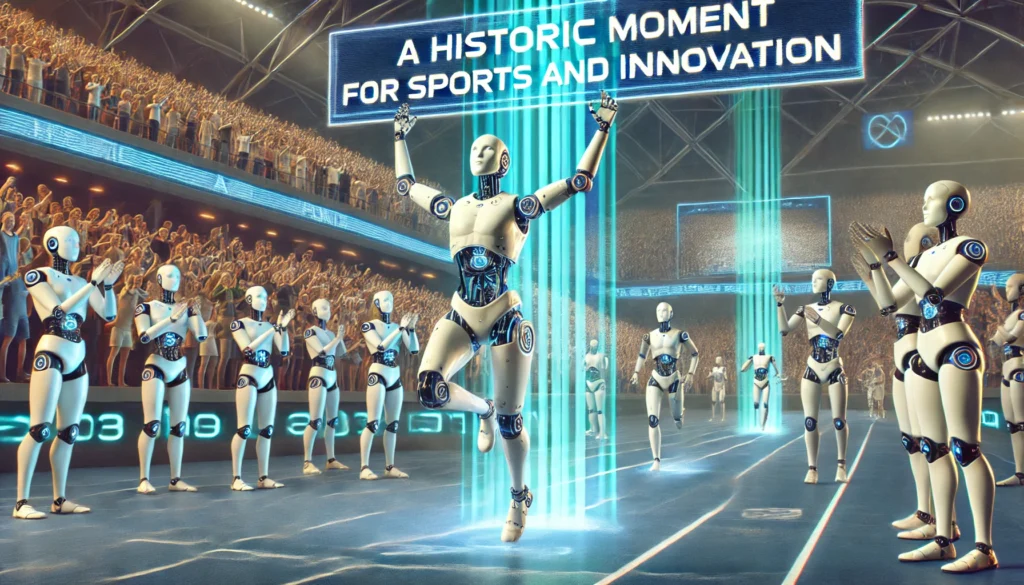
In a harbinger of things to come, China will host a groundbreaking event – the inaugural human-robot half-marathon. This unprecedented competition showcases cutting-edge robotics and artificial intelligence, capturing the imagination of spectators worldwide. Both human athletes and autonomous humanoids will test their endurance over an identical 13.1 mile course, pushing boundaries and galvanizing technological progress.
A Pioneering Showcase of Robotic Mobility

To participate, robots must resemble the human form, walk on two legs, and stand between 20 inches and 80 inches tall. Meeting such criteria forces ingenious solutions, as engineers strive to design droids with fluid, lifelike gaits. Contestants must prove their mettle on unscripted terrain under changing conditions, a immense challenge stimulating perpetual betterment.
Man Versus Machine: A Dual-Pronged Display
Some robots will react to human remote controls in real-time, navigating the pavement dependent on handlers’ commands. In contrast, other robots rely solely on internal algorithms, braving the route independently through cameras, sensors and onboard problem-solving. Witnessing these divergent approaches side-by-side provides unique insight into AI’s relationship with humanity.
Autonomous robots especially demonstrate amplified machine reasoning, perception and adaptability abilities. To reach the finish without guidance, algorithms must instantly address any unexpected obstacles while preserving stability and conserving battery power. Only through such rigorous tests can autonomous robotics evolve to benefit society in increasingly sophisticated ways.
The Ultimate Test: Endurance, Energy, and Strategy

One of the biggest challenges facing these humanoid robots is endurance. Unlike humans who can rely on extensive training regimens, innate stamina, and proper hydration, robots must depend on clever battery management to sustain their performance throughout the grueling race. Competitors are allowed to swap batteries during the marathon, but a substantial penalty will be assessed – a full 10 minutes is added to a robot’s time with each replacement. Therefore, engineering teams must optimize their creations to last as long as physically possible on a single charge while also developing a nuanced strategy to judiciously use any substitutes allotted.
Additionally, robots will need to handle an unpredictable assortment of terrain varieties and weather irregularities with aplomb. Concerns like potential overheating, probable mechanical stresses, and unexpected software glitches could disrupt even the most well-engineered robot’s execution. This competition will examine not merely a robot’s hardware engineering prowess but also its control architecture’s resilience under duress and ability to competently function even when confronted with surprises.
The ramifications of this race extend well beyond only its excitement as an experiment – it could profoundly impact robotics development. Humanoid machines that can lope, sprint and maintain balance despite disturbances will be indispensable for healthcare, disaster relief work, logistical operations, and automated industrial processes. The technologies forged for success in this competition may pave the way for robots assisting the infirm, navigating intricate outdoor and indoor spaces, and dexterously accomplishing complicated physical duties resembling humans.
Advancements resulting from this event could also influence exoskeletons, prosthetics and robotic assistants powered by artificial intelligence. Achieving human-caliber movement proficiency, endurance and efficiency could yield insights applicable to physical therapy, military applications and even space exploration.
A Historic Moment for Sports and Innovation

With thousands anticipating both human and robotic runners to vie, this half-marathon is shaping as a landmark event. It provides a rare chance to witness cutting-edge robotics in action, demonstrating precisely how far AI and engineering have progressed. Will the robots keep pace with human endurance, or will technology fall short of physical prowess? All eyes are watching worldwide, with the implications greater than ever before.
Beyond just the competition, this race may set the stage for further robot-inclusive sporting events in the future. Future marathons, obstacle courses, and perhaps even competitive AI-driven sports could become mainstream, leading society into a new era of human-robot collaboration in athletics.
Readying for the Emerging Age of Racing
The realm of sports is evolving at a rapid clip, and incorporating humanoid robots into competitive running marks the start of an unprecedented time. This groundbreaking event isn’t just about speed—it’s about pushing the boundaries of artificial intelligence, robotics, and human ingenuity. As technology continues to advance, we are witnessing the merging of athletic ability and engineering unlike ever seen prior.






